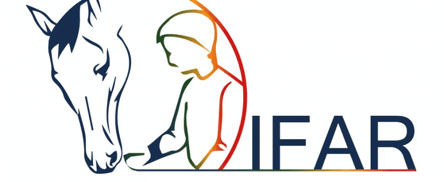This year, an automatic payment of $35 will accompany every Report of Mares bred paper filed with The Jockey Club, with the monies collected–estimated at $700,000–going to Thoroughbred retirement. The TDN’s Sue Finley caught up with The Jockey Club President and COO Jim Gagliano to talk about why the rehoming of Thoroughbred racehorses is critical to a healthy sport.
TDN: Let’s start with the concept I pose in my introduction: why is the rehoming of Thoroughbred racehorses critical to a healthy sport?
JG: Aftercare is a critical issue for the sport because the well-being of horses is so important to our fans and the general public. It is also important to note that Thoroughbreds have proved to be successful in virtually all disciplines of equestrian competition and as recreational riding horses, therapeutic riding horses, and police horses. We need to cultivate a culture where that potential is not only recognized, but also celebrated for the benefit of the breed and the sport.
TDN: How did you arrive at the $35 figure?
JG: From research with our customers and market analysis.
TDN: For years, retirement was relegated to charity, with a handful of people in the sport making donations and doing what they could to help. Is that a fair statement?
JG: Yes. It is a fact that much of the resources raised over the years for aftercare came through charitable donations. It is important that that generosity continues, while other new, reliable sources are being developed.
TDN: That sort of charity was never really enough to solve the problem, though, was it?
JG: I don’t know if I can accurately quantify that. We do know that organizations such as Thoroughbred Retirement Foundation, Thoroughbred Charities of America, California Retirement Management Account, and many other organizations and people have done fine work for a long time when it comes to the aftercare of horses. We are also proud of what Thoroughbred Aftercare Alliance has accomplished since its founding in 2012 and in particular its work in not just funding, but accrediting aftercare locations – essentially holding them to a high standard of care. We have a good foundation for aftercare; we just need to work collectively to do more.
TDN: When the Thoroughbred Aftercare Alliance (TAA) was formed, the concept was that there would be dozens of automatic payments in small increments at different touchpoints in a horse’s career. That hasn’t happened to the extent predicted, and, in fact, The Jockey Club has led the way in pushing that concept, first with the registration payment and now with this. Is this the future of the funding of a meaningful retirement plan?
JG: We think we are heading in the right direction. Everyone who touches a Thoroughbred’s life should be able to contribute in some way to its aftercare. Some organizations have not fully embraced the automatic, mandatory payments, but TAA continues to work with those organizations to coordinate funding consistent with the original funding program. In particular, we’d like to see some more participation by certain segments of the industry as a few of them may still need to be convinced that well-funded, well-run aftercare is good for the business.
TDN: Is it important to spread the love among other segments of the industry, other people who make their living from and profit from racing, and if so, how can you see expanding upon these touchpoints to, well, touch them as well?
JG: Under John Phillips’s leadership, TAA is working on ways to bring these touchpoints into the automatic contributions to ensure a continued source of funding and resources for aftercare organizations. We support these initiatives and think they are a vital part of solving the aftercare puzzle.
TDN: If someone said to you, “What’s the monetary figure that is needed to accomplish the goal of providing a safe option for horses immediately exiting the racetrack?” what would your answer be?
JG: That is a tough one to answer, and it has been for a long time. It is probably a combination of cash and in-kind services, which can be difficult to reconcile, but it certainly is a higher number than we have been able raise to date. The TAA board has been working to quantify a number, which is a goal for 2018.
*This article is courtesy of Sue Finley and The TDN. To view this content from its original source, please visit this link.
